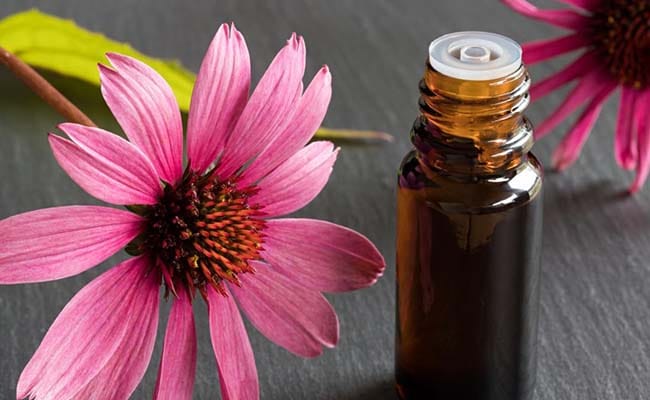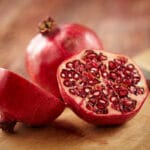We often appreciate flowers for their beauty, but did you know that many common blooms possess remarkable healing abilities? Beyond their vibrant colors and pleasing scents, ordinary flowers like daisies, roses, and lavender have been used for centuries in traditional healing practices to soothe aches, potentially boost the immune system, and promote overall well-being. Join us as we uncover the secrets of nature’s floral pharmacy and explore how everyday flowers can become allies on your journey to a healthier, happier life.
Medicinal Properties of Common Flowers
Flowers are like nature’s tiny pharmaceutical factories, producing a wide array of compounds like antioxidants, anti-inflammatories, and antimicrobial agents.
- Antioxidants protect our cells from damage caused by harmful molecules called free radicals.
- Anti-inflammatories help reduce swelling and pain.
- Antimicrobial agents can help fight off infections.
These potent compounds can be extracted and utilized in various forms, such as:
- Soothing teas
- Concentrated extracts
- Convenient capsules
- Potent supplements
While we may not know exactly when humans first discovered the therapeutic potential of flowers, historical records and traditional practices suggest a long and intimate relationship between people and plants. Consider chamomile tea, a beloved remedy used for generations to potentially alleviate insomnia and anxiety – a testament to the enduring power of flower medicine.
Although we’ve benefited from flower medicine for centuries, research is ongoing, and new discoveries about the power of plants are being made all the time! Scientists believe we’ve only scratched the surface of understanding the medicinal properties of flowers.
Imagine: a garden stroll could be a walk through a living pharmacy! Embracing the medicinal power of flowers allows us to reconnect with ancestral wisdom, the natural world around us, and potentially enhance our well-being.
What is the most medicinal flower?
Choosing the “most medicinal” flower is a bit like picking a favorite color – it depends on what you’re looking for! Different flowers possess unique healing properties, and what works wonders for one person might not be the best fit for another.
Let’s look at a few examples:
- Calendula, chamomile, and lavender are like the anti-inflammatory all-stars, potentially helping to calm redness and swelling.
- Echinacea, garlic, and thyme are the germ-fighting superheroes, known for their antibacterial properties that may help your body fight off unwanted pathogens.
- Chamomile teams up with lavender and valerian root to offer calming vibes and potentially promote better sleep.
Instead of crowning one flower the ultimate champion, it’s more about finding the flowers that meet your individual needs. But remember, even though these flowers are natural, it’s always best to talk with your doctor or a qualified herbalist before adding them to your wellness routine, especially if you’re taking other medications.
What flower is often used medically?
One superstar in the healing flower world is chamomile. This gentle flower, with its tiny daisy-like blooms, is celebrated for its calming properties and ability to potentially soothe digestive discomfort. Feeling stressed? A cup of chamomile tea might be just the thing to help you unwind.
Another flower with a long history of medicinal use is marigold. This bright and cheerful bloom is packed with compounds that may fight off harmful germs and soothe inflammation. That’s why you’ll often find marigold as an ingredient in creams and ointments for cuts, scrapes, and itchy skin.
Imagine stepping into your garden and being surrounded by beautiful flowers that could also enhance your well-being! Growing your own medicinal flowers means having access to nature’s remedies right outside your door.
The best part? We’re still discovering all the amazing things these floral healers can do. Scientists are always studying plants to unlock even more of their secrets.
What are the Traditional Medicinal Flowers?
For centuries, traditional healers have recognized the power of flowers, using them to address a wide range of ailments. Ancient civilizations like the Egyptians, Greeks, and Romans relied on nature’s medicine cabinet, and flowers were an essential part of their healing practices. What makes these flowers so special? They contain a variety of compounds with potential therapeutic benefits.
Here’s a peek at some of the most popular medicinal flowers:
| Flower | What it might help with | How it might make you feel | What some experts believe |
|---|---|---|---|
| Calendula | Skin problems, cuts, scrapes, inflammation | Soothed, less irritated | Might speed up wound healing |
| Rose | Skin irritation, stress, menstrual cramps | Relaxed, balanced | Might have powerful antioxidant properties |
| Lavender | Anxiety, sleeplessness, inflammation | Calm, sleepy | Could help with relaxation and sleep |
| Echinacea | Colds, flu, boosting your immune system | Stronger, healthier | Possibly reduces cold symptoms |
| Jasmine | Digestive issues, low mood, trouble sleeping | Calmer, more content | Might help with digestion and relaxation |
| Chamomile | Upset stomach, anxiety, skin irritation | Relaxed, soothed | May have anti-inflammatory effects |
| Evening Primrose | Hormonal imbalances, skin conditions, heart health | Balanced, comfortable | May reduce PMS symptoms |
While the potential benefits of traditional medicinal flowers are numerous, it’s important to remember that everyone responds differently to plant-based remedies. Research is constantly evolving, and new discoveries about the power of plants are being made all the time. It’s always a good idea to consult with a healthcare professional before incorporating new herbal remedies into your routine, especially if you’re pregnant, breastfeeding, or taking other medications.
What flower is known for healing?
Flowers aren’t just beautiful; they also possess hidden healing powers, offering a natural approach to well-being.
- Chamomile, often enjoyed as a soothing tea, may help calm the nerves and promote restful sleep.
- Lavender, with its calming scent, is often used in aromatherapy to potentially ease anxiety and encourage relaxation.
- Roses are rich in antioxidants, which may help protect our bodies from cellular damage.
- Jasmine is thought to be a natural mood booster and may help ease digestive discomfort.
But that’s not all! The world of flowers is brimming with healing potential.
- Echinacea is thought to support the immune system, especially during cold and flu season.
- Calendula is known for its potential to combat bacteria and reduce inflammation, making it a popular ingredient in skincare products.
- Evening Primrose is believed to support healthy skin and hormonal balance.
- Yarrow has a long history of use as a wound healer and may help stop bleeding.
- Hibiscus is thought to support liver health and may help regulate blood pressure.
Flowers are like tiny medicine cabinets, each with its own unique set of healing properties. You can enjoy their potential benefits in teas, tinctures, creams, and ointments. Remember, it’s always wise to chat with your doctor before adding medicinal flowers to your routine, especially if you’re taking other medications.
Keep in mind that research on the healing properties of flowers is ongoing, and new discoveries are being made all the time! It’s an exciting time to explore the world of natural remedies and see what flower power works best for you!
Which is the king of all medicinal plants?
While it’s difficult to declare one plant the absolute “king” of medicinal plants, the dandelion certainly deserves a place of honor. This humble plant, often considered a weed, has been used for centuries in traditional healing practices worldwide. Dandelions are packed with vitamins, minerals, and antioxidants, making them a nutritional powerhouse. Some people believe they can help with digestion, immune support, and even skin irritation.
While many people attest to the power of dandelions, scientific research is ongoing to fully understand their mechanisms of action. It’s important to consult with your doctor before using dandelion or any herbal remedies, especially if you’re taking other medications or have underlying health conditions.
What two flowers are used as medicine?
Chamomile and lavender are two superstars in the flower-power medicine world.
- Chamomile is well-known for its gentle, soothing properties and is often enjoyed as a tea to potentially ease stress and anxiety. Some people find it helpful for digestive upset, and it may also play a role in reducing inflammation.
- Lavender, with its intoxicating aroma, is highly prized in aromatherapy for its calming and relaxing effects. Lavender is often used to promote restful sleep, ease headaches, and soothe skin irritations.
Incorporating these floral remedies into your life is easy! Chamomile tea is widely available, and you can even grow your own chamomile plants. Lavender can be enjoyed in essential oils, soaps, lotions, and even as a relaxing addition to your bath.
Remember, while chamomile and lavender are generally considered safe, it’s always wise to consult with your doctor before trying anything new, especially if you have existing health conditions or are taking medications.
What is the best medical flower?
There’s no single answer to the question of the “best” medical flower because the ideal choice varies depending on individual needs and preferences. Just like finding the right pair of shoes, it’s about finding the perfect fit for you!
Here are a few factors to consider when choosing a medicinal flower:
- What are your hoping to address? Are you seeking stress relief, better sleep, or overall wellness support?
- What are your personal preferences? Consider the scent, taste, and availability of the flower.
Let’s explore a few superstars of the medicinal flower world:
- Lavender: This fragrant purple flower is often used to reduce stress and anxiety. It is also believed to promote restful sleep.
- Chamomile: Known for its gentle soothing properties, chamomile is often used to ease digestive discomfort and promote relaxation.
- Rose: In addition to their beauty, roses have incredible healing properties for the skin. They are thought to reduce inflammation, soothe irritation, and may even be helpful for conditions like eczema and acne.
However, this is just a glimpse into the vast and fascinating world of medicinal flowers! There are so many other incredible blooms out there waiting to be discovered – like calendula, echinacea, and St. John’s Wort, just to name a few.
Research on medicinal flowers is ongoing, meaning that our understanding is constantly evolving. The best way to find the best medical flower for you is to embrace your inner explorer, do your research, and consult with qualified healthcare professionals.
If you are a nature lover or you simply appreciate the beautiful things in life, you should definitely check out 10 amazing facts about flowers. And if you really want to dive deep into the world of flowers, we recommend reading about rare flower species and their habitats.
Which is the most powerful medicinal plant?
Choosing the “most powerful” medicinal plant is challenging because “powerful” can have different meanings depending on the desired effect. Are we talking about pain relief, mood enhancement, or fighting infections?
Here are a few contenders for the title of “most powerful” based on their potential benefits:
- Turmeric: This vibrant yellow root, commonly used in Indian cuisine, contains curcumin, a compound studied for its potential to reduce inflammation, ease pain, and potentially protect against some chronic diseases.
- Garlic: This kitchen staple has a long history of medicinal use, and modern science suggests it may help lower blood pressure, support the immune system, and potentially even have cancer-fighting properties.
- Elderberry: This berry has gained popularity, especially during cold and flu season, because some studies suggest it may help shorten the duration of these illnesses.
It’s important to remember that research is ongoing, and our understanding of these powerful plants continues to evolve. Always consult with your doctor before trying new herbal remedies, especially if you have underlying health conditions or are taking medications.
Which Flower is Used for Drugs?
While many flowers offer healing benefits, it’s important to remember that the word “drug” has a broad meaning, encompassing substances with a wide range of effects – from over-the-counter pain relievers to highly controlled substances.
The most well-known example of a flower used for drugs is the opium poppy, which produces opium, the source of powerful painkillers like morphine and codeine. While these drugs have legitimate medical uses, they also have a high potential for addiction and are strictly regulated.
Here are a few more examples of flowers used for drugs:
| Flower | Substance | Effects | Medical Uses | Potential Risks |
|---|---|---|---|---|
| Opium Poppy | Opium | Pain relief, euphoria, sedation | Pain management, anesthesia | Addiction, overdose |
| Cannabis | THC, CBD | Altered perception, relaxation, pain relief | Epilepsy, chronic pain, anxiety | Impaired memory, dependence |
| Peyote Cactus (Flower) | Mescaline | Hallucinations, altered perception | Spiritual practices | Psychological distress |
Research on the potential uses and effects of plants is ongoing, constantly expanding our knowledge of the natural world. Just because a flower can be used to create a drug doesn’t mean it is safe or legal. Many of these plants require special knowledge and handling to be used responsibly, and some are strictly controlled substances.
What flower is good for pain?
Nature provides a wealth of natural remedies for pain relief, and many flowers possess properties that can help ease discomfort.
- Chamomile: This gentle flower, often enjoyed as a tea, may help ease menstrual cramps, headaches, and muscle pain due to its potential anti-inflammatory properties.
- Arnica: This mountain daisy is a go-to remedy for pain and inflammation related to injuries such as sprains, bruises, and muscle soreness.
- Lavender: The calming and relaxing scent of lavender is believed to help ease tension headaches and may promote relaxation for those experiencing pain.
- Roses: The petals of roses are thought to reduce inflammation and may offer relief for headaches and sore throats.
- Calendula: Celebrated for its skin-soothing properties, calendula is thought to help with inflammatory skin conditions like eczema and psoriasis.
You can harness the pain-relieving potential of flowers in several ways:
- Teas: Enjoy the healing benefits by steeping dried flowers in hot water.
- Tinctures: These concentrated extracts are made by soaking flowers in alcohol and can be taken orally or applied topically.
- Essential Oils: Add a few drops to a diffuser, dilute in a carrier oil for massage, or add to a bath.
- Topical Ointments: You can purchase or make your own healing salves and ointments using flower-infused oils or beeswax.
While generally safe, it’s always best to consult with your doctor before adding medicinal flowers to your wellness routine, especially if you have underlying health conditions or are taking medications. Some flowers can interact with medications or may not be suitable for everyone.
This is just a starting point! The world of natural remedies is vast and fascinating. Don’t be afraid to explore, do your research, and discover what works best for you!
Key Points:
- Flowers possess medicinal properties, including antioxidants, anti-inflammatories, and antimicrobial agents.
- Compounds from flowers can be extracted and used in teas, extracts, capsules, and supplements.
- The medicinal use of flowers has a long history in traditional healing practices.
- Chamomile tea is a well-known example of a flower-based remedy.
- Research is ongoing to explore the full medicinal potential of flowers.
- Embracing the medicinal power of flowers connects us with nature and ancestral wisdom.
Key Lines:
- Discover the medicinal properties of over 30 flowers, unlocking their remarkable healing powers.
- Harness the therapeutic benefits of flowers for various ailments, from minor irritations to serious conditions.
- Learn how to incorporate medicinal flowers into your daily routine through teas, tinctures, and topical applications.
- Explore the potential of combining different flowers to enhance their therapeutic effects.
Condensed & Organized Context:
Key Line 1: Wide Array of Medicinal Flowers
- Over 30 medicinal flowers with diverse therapeutic properties, including anti-inflammatory, antibacterial, and calming effects.
Key Line 2: Medicinal Uses of Flowers
- Flowers can potentially alleviate ailments such as stomach ulcers, menstrual cramps, sore throats, anxiety, and sleep disorders.
- Some flowers, such as lavender, possess antiseptic and antiviral properties, making them potentially effective for wound healing and preventing infections.
Key Line 3: Incorporating Medicinal Flowers
- Brew teas by steeping fresh or dried flowers in hot water for a soothing and potentially therapeutic beverage.
- Create tinctures by infusing flowers in alcohol, extracting their medicinal compounds for concentrated use.
- Use flowers in topical applications, such as salves, ointments, and compresses, for direct application to affected areas.
Key Line 4: Combining Flowers
- Combining flowers with complementary properties can potentially enhance their therapeutic effects.
- For example, chamomile and lavender, both known for their calming properties, can be combined to create a deeply relaxing blend.
Unique Insights:
- Potential Side Effects: While medicinal flowers offer natural remedies, it’s essential to note that some flowers may have side effects or interact with medications. Research and consult a healthcare professional before using any flower remedies.
- Dosage and Preparation: The dosage and preparation method for medicinal flowers vary widely depending on the specific flower and intended use. Experiment carefully and seek guidance from knowledgeable sources.
- Growing Medicinal Flowers: With proper knowledge and care, it’s possible to grow your own medicinal flowers at home, providing access to fresh and organic remedies. Consider the growth requirements of each flower and ensure they have optimal sunlight, soil conditions, and water.
















